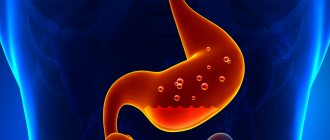Human bone marrow promotes the production of lymphocytes. After entering the bloodstream, they become immature. The first place where their maturation occurs is the thymus, the second is the lymph node. The localization of the thymus is the upper part of the chest, and the lymph nodes are the neck, groin, and armpit. T-lymphocytes are called cells after the maturation process in the thymus, and B-lymphocytes mature in the lymph node. These two types of lymphocytes produce antibodies that fight foreign tissue and infections. The antibody response is directed only at the antigen that matches it. For example, a child who has had mumps will not develop immunity against measles.
The essence of vaccination is to familiarize the immune system with a certain type of disease. Administration of a vaccine means that a small dose of the pathogen penetrates the body, which is needed for the further destructive effect of antibodies on antigens. However, there are situations when lymphocytes begin to attack the tissues of their own body. This is how autoimmune diseases begin to develop. They occur in approximately 10 percent of the world's population. Medical practice shows that rare autoimmune diseases affect men less often than women. There are ten main causes of death. These causes include autoimmune and immunodeficiency diseases.
Every person’s body has immunity, which begins its development from the moment of birth. It consists of special organs and cells that protect against negative microbial and viral effects. The immune system is based on a mechanism that can distinguish between self and foreign tissue. Various damage provokes dysfunction of the immune system, as a result of which it ceases to distinguish its own cells from foreign ones. This phenomenon activates the production of autoantibodies that mistakenly attack healthy cells. As a result, the regulatory work of t-lymphocytes disappears, and severe autoimmune diseases appear that affect the internal organs and systems of the body.
A list of autoimmune diseases should be considered. The first type is a disorder that appears when the histohematological barrier is disrupted. The second type of disease appears after the body’s tissue is transformed from physical, chemical, or viral effects. Deep metamorphotic processes occur in healthy cells, and as a result, they are perceived by others. There are cases where antigenic or exoantigenic concentration occurs. The body will react by damaging the cell on the membrane of which the antigenic complex is preserved. Sometimes contact with a virus provokes the formation of an antigen that has a hybrid property. It can affect the central nervous system.
The third group includes diseases of the autoimmune system, in which coalescence of tissue with an exoantigen occurs. As a result, a natural reaction is activated, aimed at the affected areas. The fourth group includes ailments caused by a genetic deviation or the influence of an unfavorable external factor. This entails a rapid mutation of immune cells, which manifests itself as lupus erythematosus.
The development of an autoimmune disease can develop at any age. Despite this, there is a group of people who are more susceptible to autoimmune diseases. Namely:
- A person who is exposed to negative influences from external factors. Specialists in autoimmune diseases in Moscow highlight the influence of sunlight, chemicals, viral or bacterial infections, which cause pathological processes in the immune system.
- A woman of childbearing age. Autoimmune diseases occur more often in women than in men.
- Certain races and ethnic groups. Signs of an autoimmune disease are more likely to occur in people with white skin. For example, African Americans and Hispanics have a hard time with systemic lupus erythematosus.
- Hereditary factor. It should be remembered that autoimmune diseases are inherited from close relatives. Medical practice shows that a family history can reveal different types of immune disorders.
Chronic atrophic gastritis (type A)
The formation of autoantibodies against components of the cells of the gastric mucosa leads to their functional disorders, atrophy, death and achlorhydria. Autoantibodies against parietal cells are found both in blood serum and in gastric juice OdA, 1db. Normally, a protein synthesized by the parietal cells of the gastric mucosa, called intrinsic factor, binds to vitamin B12, and the resulting complex is transported through the intestinal mucosa. Autoantibodies against intrinsic factor bind to it, block it and prevent the transfer of vitamin B12. This leads to the development of vitamin B12 deficiency anemia.
Chronic atrophic gastritis type A accounts for 3-5% of all forms of gastritis. It is accompanied by damage to the mucous membrane mainly of the fundus and body of the stomach. The death of the glands of the gastric mucosa occurs, the number of main and parietal cells decreases. Inflammatory infiltrates and fibrosis processes develop.
Chronic atrophic gastritis (type A) is an autoimmune disease associated with autoantibodies against intrinsic Castle factor, as well as against chief and parietal cells of the gastric mucosa.
Symptoms
The disease develops mainly in middle and old age. After eating, there is a feeling of heaviness in the epigastric region and fullness of the stomach. Appetite is reduced. There is diarrhea alternating with constipation. Chronic atrophic gastritis is often combined with vitamin B12 deficiency anemia, type 1 diabetes mellitus, thyroiditis, and primary hypoparathyroidism.
Treatment
Replacement therapy is carried out:
1) with secretory gastric insufficiency (gastric juice, hydrochloric acid with pepsin, etc.);
2) with a decrease in the excretory function of the pancreas (cholenzym, mezim forte, etc.).
Prescribe drugs that enhance reparative processes, etc. Vitamin B12-deficiency anemia is treated. When dysbiosis syndrome develops, probiotics are prescribed.
What is the prevention of autoimmune diseases?
To reduce the risk of immune pathology, viral infections and acute respiratory diseases should be completely treated. A person’s diet should include foods that contain vitamins and microelements. As well as fresh vegetables, fruits, whole grains, low-fat dairy products, a lean source of protein. Eliminate saturated fats, cholesterol, salt, refined sugar. The number of meals is two to four times.
Minimize stressful situations and nervous tension, since disturbances in the central nervous system increase the sensitivity of the immune system to the negative effects of external and internal factors. Start meditating, reading books, choosing a hobby. Also, a person should get proper rest. Poor sleep provokes a disruption in hormonal production. Do moderate physical activity and yoga. It is necessary to increase the load only after consulting a doctor. By following preventive rules, a person will reduce the likelihood of an immune disorder.
Celiac disease
The pathology is associated with HLA-DR3 and H1_A-B8 antigens. The breakdown of glutens leads to the formation of gliadins - peptides, which, due to peptidase deficiency, accumulate in the body, causing an allergic and toxic effect on it.
Another type of gastritis, type B (chronic Helicobacter pylori gastritis), is the most common pathology among all types of chronic gastritis, caused by the bacterium Helicobacter pylori. It is the most important ulcer-forming factor.
Celiac disease (gluten enteropathy) is intolerance to the gluten proteins of wheat and other grains in the form of chronic immune inflammation of the upper small intestine, accompanied by villous atrophy, crypt hyperplasia, malabsorption and diarrhea.
In the mucous membrane of the small intestine, the number of cells responsible for the development of humoral and cellular immunity increases: intraepithelial lymphocytes, plasma cells producing IgM, eosinophils and mast cells. Antigliadin antibodies and antireticulin antibodies appear.
The number of T-lymphocytes interacting with gliadin increases. A similar pathogenesis with celiac disease is relevant for another gluten-sensitive disease - familial dermatitis herpetiformis.
Symptoms
There is persistent diarrhea, copious foamy stools, flatulence, weight loss, anorexia and weakness. Dermatitis herpetiformis may develop.
Laboratory diagnostics
Skin tests for gliadin develop after 6-8 hours. Biopsies of the jejunum or duodenum are studied. Antibodies against gliadin are detected in blood serum. Antibodies against tissue transglutaminase are also determined. As a result of impaired permeability of mucous membranes, antibodies against various food antigens may appear.
Treatment
A gluten-free diet is used by excluding products from wheat, rye, barley, and oats from the diet. Corticosteroids and immunosuppressants are used according to indications
Who gets sick more often
Autoimmune pathologies can appear in people of any age and gender, but it has been revealed in which groups these diseases are more likely to develop. Diagnosis of the disease in these cases is especially simple. The maximum risk of developing systemic disease is observed in people belonging to the following groups:
- women of childbearing age - doctors cannot determine what is causing the pattern, but at a young age it is women who develop autoimmune disorders much more often than men;
- persons with a hereditary predisposition to pathology - a hereditary predisposition is most often transmitted to diseases such as systemic lupus erythematosus and multiple sclerosis. If parents are faced with this pathology, then the likelihood of its development in children increases many times over. The situation is especially dangerous when both parents suffer from autoimmune conditions;
- constant exposure to toxic chemicals on the body - people working in hazardous industries usually belong to this category;
- persons belonging to certain races - doctors were able to reveal that depending on race, the likelihood of the occurrence of a particular disease, as well as the severity of its course, increases to a greater extent. Thus, type 1 diabetes is much more often diagnosed in people of the Caucasian race, and systemic lupus erythematosus is most severely tolerated by representatives of the Negroid race.
There is no predominance of male patients with any autoimmune disease. In all cases, the number of patients of both sexes is either equal, or women encounter pathology more often. Due to the unknown causes of the development of pathology, disease prevention has not been developed.
Nonspecific ulcerative colitis
Nonspecific ulcerative colitis is a chronic recurrent inflammatory disease of the colon with ulcerative-destructive changes in its mucous membrane.
Patients develop diarrhea with blood or mucus and round ulcers of the mucosal surface. Infiltration of the lamina propria by eosinophils, lymphocytes, mast cells and neutrophils occurs. The process spreads from the rectum to the proximal intestine. Hyperregeneration leads to the formation of pseudopolyps. The development of toxic megacolon and colon carcinoma is possible, as well as the development of extraintestinal complications - uveitis and arthritis. Nonspecific ulcerative colitis is also associated with IgA autoimmune hepatitis and primary biliary cirrhosis. The mucosa has high levels of IL-5, suggesting Tn2 activity. The autoimmune nature of the disease is supported by the presence of antineutrophil cytoplasmic antibodies (A1MCA) and the association with some autoimmune diseases.
Symptoms
Nonspecific ulcerative colitis develops acutely within 1-2 days; patients experience three syndromes of intestinal damage: bowel dysfunction, hemorrhagic pain syndromes. Possible extraintestinal manifestations :
- joint syndrome,
- erythema nodosum,
- uveitis,
- iridocyclitis,
- amyloidosis, etc.
With the gradual development of the disease, mainly only rectal bleeding is observed.
Laboratory diagnostics. The severity of the manifestations of ulcerative colitis is accompanied by an increase in ESR (with rare leukocytosis).
Treatment. In case of acute onset of the disease, sulfasalazine and aminosalicylates are prescribed.
Categories of pathologies
All pathologies are divided primarily into local and systemic. With the former, only certain organs or tissues are affected, while with systemic ones, the body as a whole is affected, which is a particularly serious condition.
Also, based on which organs or tissues are affected by the autoimmune disease, the following types of pathology are distinguished:
- joint autoimmune diseases;
- endocrine autoimmune diseases;
- autoimmune diseases of the nervous system;
- autoimmune liver diseases;
- autoimmune diseases of the gastrointestinal tract;
- autoimmune diseases of the hematopoietic system;
- autoimmune diseases of the cardiovascular system;
- autoimmune kidney diseases;
- autoimmune skin diseases;
- autoimmune diseases of the respiratory system and lungs.
Depending on which organs or systems are affected, the severity and method of treatment of the autoimmune disease are determined.
Crohn's disease (granulomatous colitis)
This is a chronic granulomatous segmental inflammation of the digestive tract in the form of terminal ileitis or regional enterocolitis
The inflammatory process develops segmentally: the affected segments of the intestine alternate with unaffected areas (“kangaroo jumping”). More often, the terminal ileum is involved in the process (terminal ileitis). Less commonly, the small and large intestines are damaged simultaneously. Inflammation affects all layers of the intestinal wall. Lymphocytic granulomas, granulomas including giant and epithelioid cells, abscesses and deep penetrating ulcers are formed in the thickness of the wall, which is why the mucous membrane takes on the appearance of a “cobblestone street”. Stenosis and inflammatory conglomerates are formed. The intestine becomes deformed, taking on the appearance of a “garden hose”. Possible formation of intestinal fistulas.
The incidence of rectal carcinoma and amyloidosis is increasing. Crohn's disease is associated with the HLA-DR1 and -DQw5 antigens. The level of IL-1 2 increases on the intestinal mucosa. This cytokine, stimulated by bacteria, promotes the differentiation of naïve TH1 T-lymphocytes. Accordingly, the activity of TH1 in the mucous membrane of these patients is high, which determines the concentration of IFN-γ, TNF-α and IL-2. There is a high level of IgG2, which effectively recognizes carbohydrate antigens of bacteria.
Symptoms
With the acute onset of the disease, symptoms of regional enteritis develop in the form of sharp pain in the right iliac region and fever. Possible symptoms of acute appendicitis.
More often, a gradual increase in disorders is observed: cramping pain in the abdomen, periodically unstable stools and other functional disorders. At the height of the disease, persistent diarrhea and sometimes constipation develop. Long-term remission is possible. Toxic-allergic complications are more often observed when the process is localized in the colon.
Laboratory diagnostics
Crohn's disease is confirmed by the presence in the patient's blood serum of antibodies to food allergens and to opportunistic intestinal commensal bacteria. Antibodies against the surface structures of intestinal epithelial cells may also appear.








